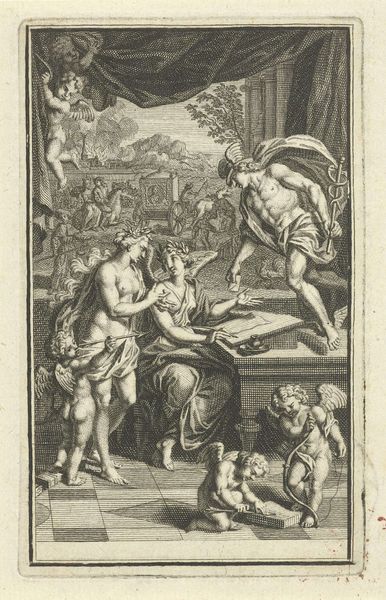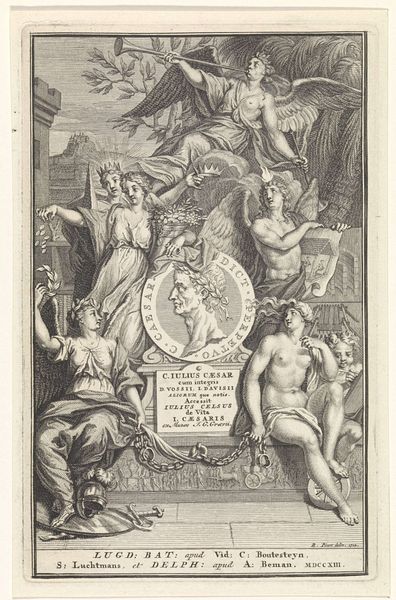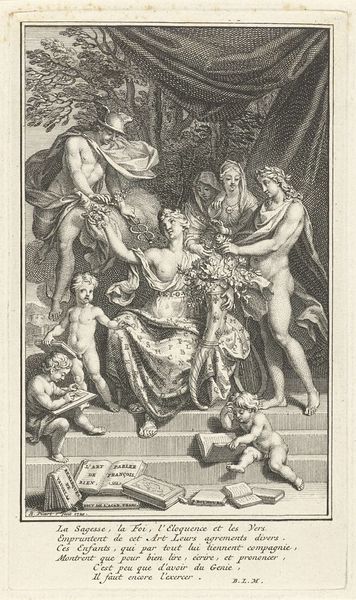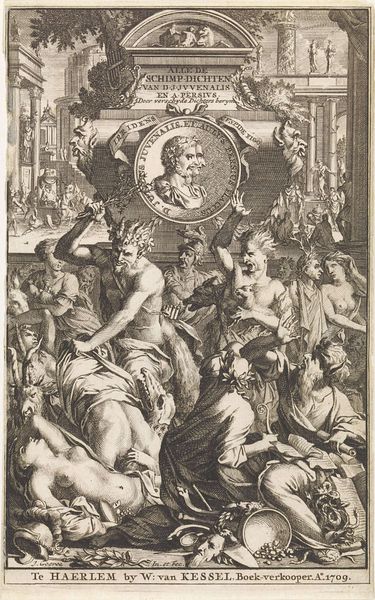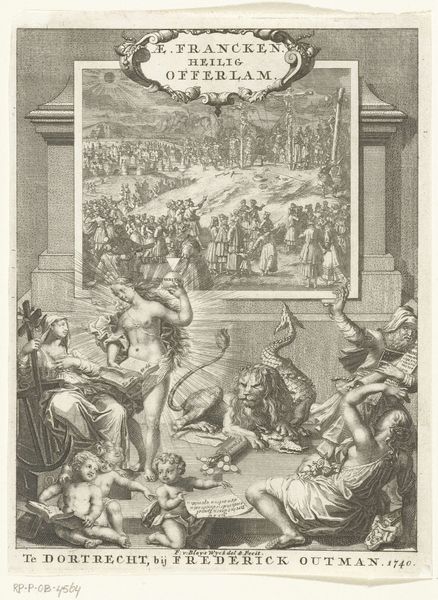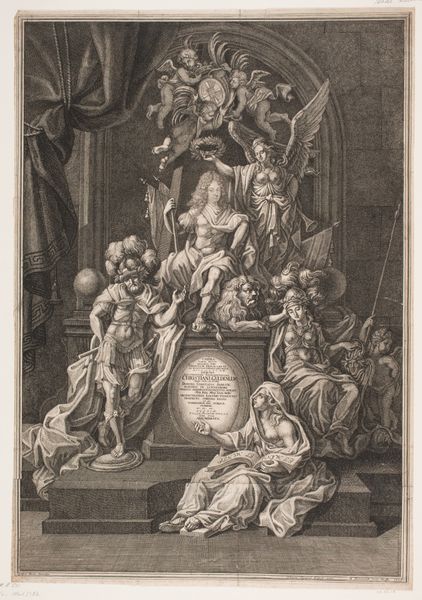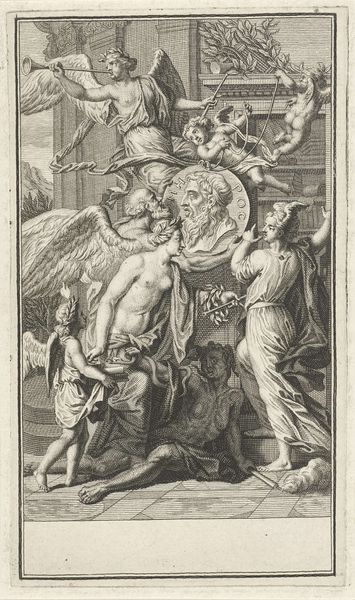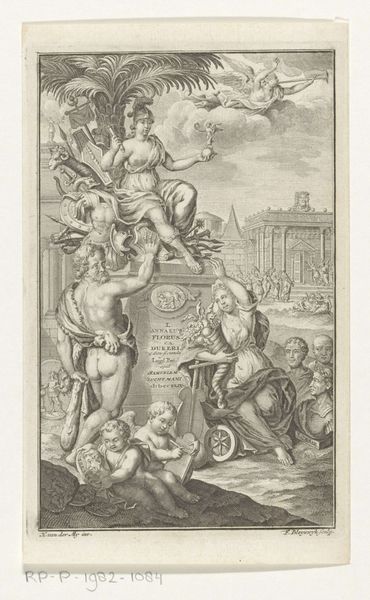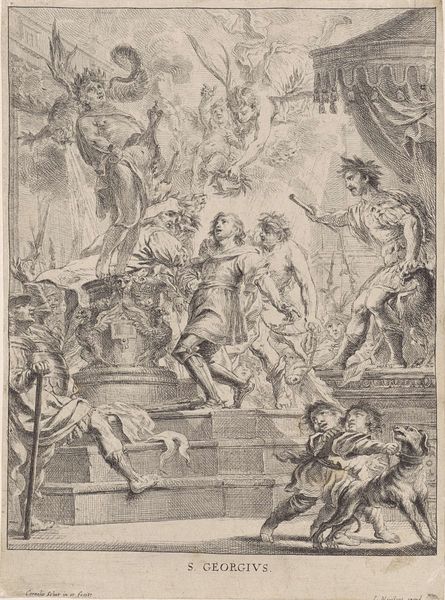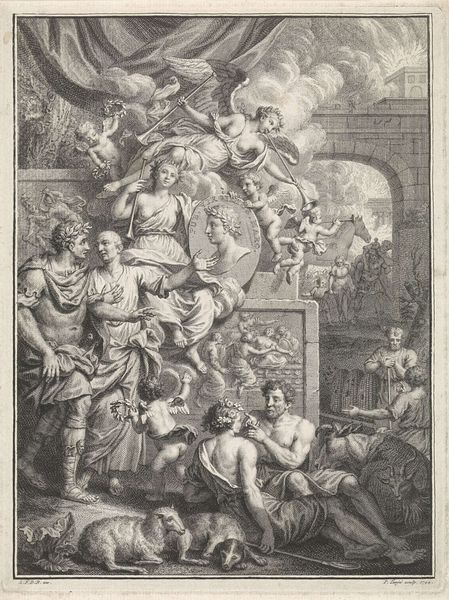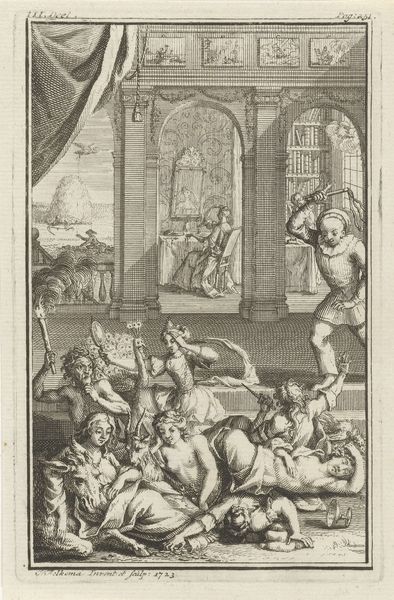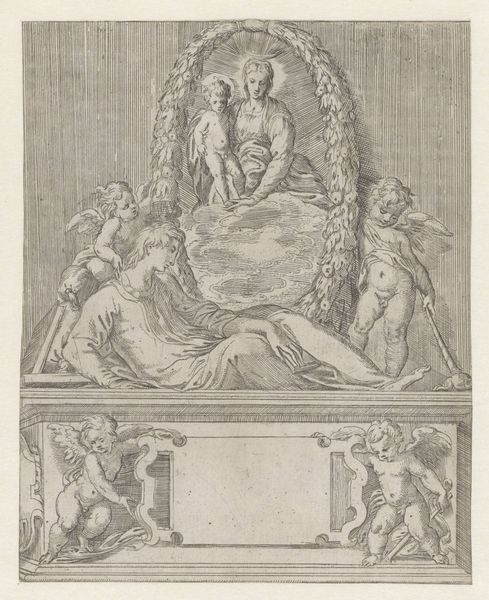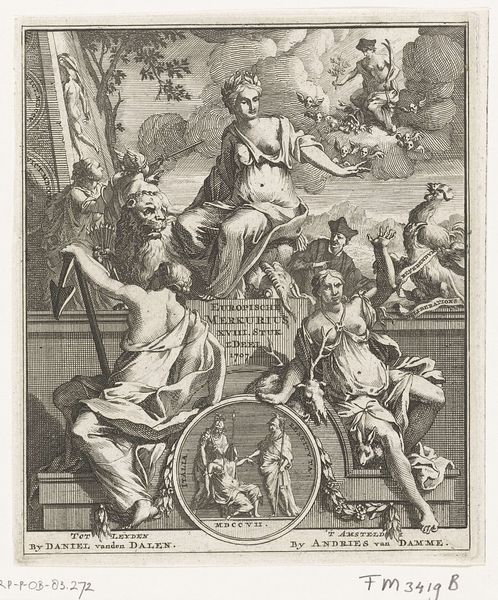
print, intaglio, engraving
#
allegory
#
baroque
# print
#
pen illustration
#
pen sketch
#
intaglio
#
old engraving style
#
figuration
#
line
#
history-painting
#
engraving
Dimensions: height 134 mm, width 82 mm
Copyright: Rijks Museum: Open Domain
Bernard Picart created this allegorical representation of Hercules using etching in 1714. Here, Hercules ascends the stairs, dragging a chain, while an angel above him announces his arrival with trumpets. At the top, a woman with a steering wheel awaits. This steering wheel is the key to unlocking the image: it represents Fortune, a concept that dates back to ancient Roman times, often depicted as a goddess who capriciously grants or withholds luck and destiny. Hercules' climb symbolizes the arduous path to Virtue, contrasting with the languid figures below, representing vices like indolence and greed. We see Fortune, then, as the reward for those who, like Hercules, rise above base human instincts. Consider how Fortune has evolved: from the Roman goddess Fortuna, to her reappearance in Renaissance emblems, and even today in the concept of "fate." This demonstrates the cyclical nature of symbols, constantly reappearing, transformed, in our collective consciousness.
Comments
No comments
Be the first to comment and join the conversation on the ultimate creative platform.

